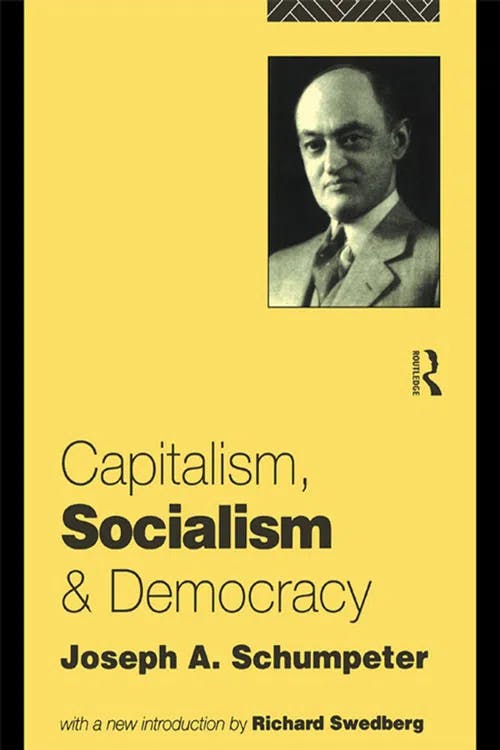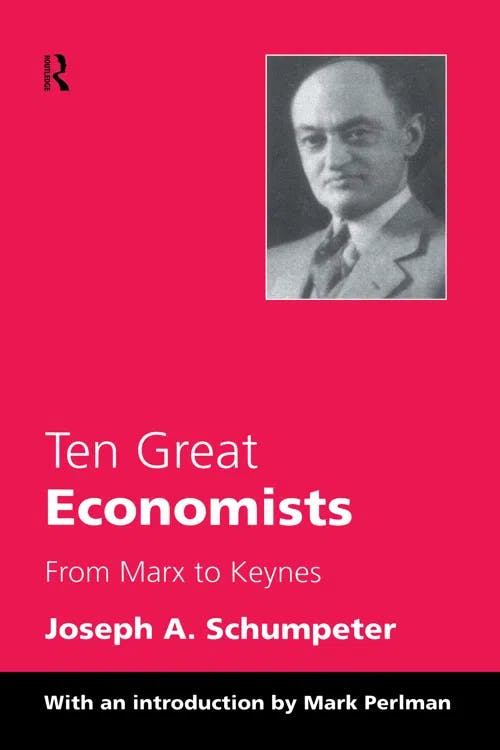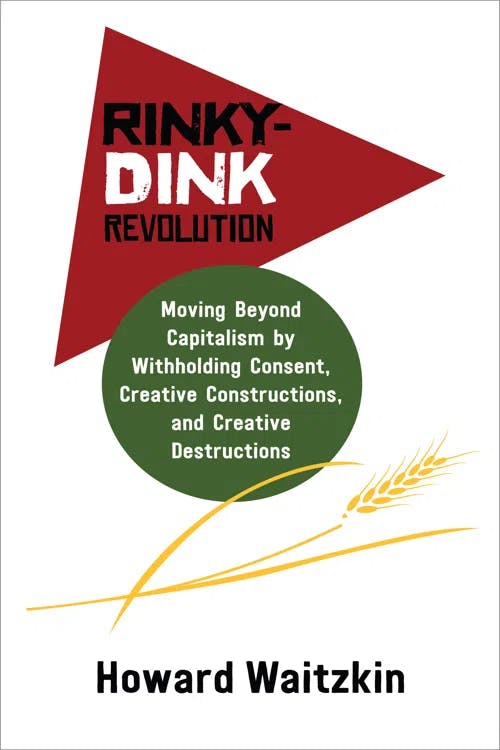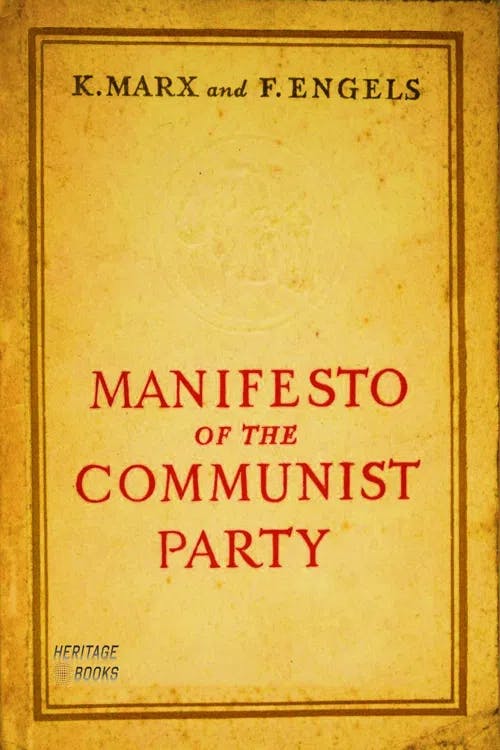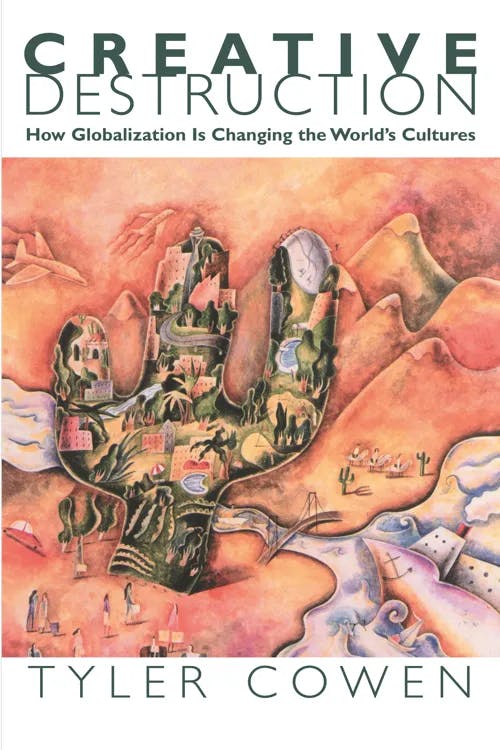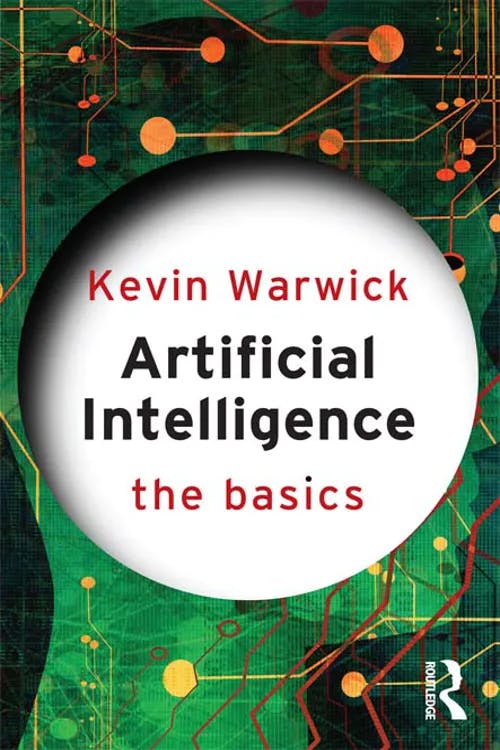What is Creative Destruction?
MA, Management Science (University College London)
Date Published: 09.01.2024,
Last Updated: 09.01.2024
Share this article
Defining creative destruction
Think about your first ever music-playing device (e.g. a Walkman or an iPod). It is very likely that you have since replaced it with a more convenient and accessible solution, such as streaming software on your phone. Arguably, this technological advancement makes listening to music a lot more convenient and cost effective.
This is a simple example of creative destruction theory which, as defined in the book The Power of Creative Destruction (Aghion, Antonin and Bunel, 2021), “is the process by which new innovations continually emerge and render existing technologies obsolete”. Individuals’ changing needs and wants are what drive creative destruction. Indeed, firms and organizations will compete to produce the next-best-thing that captures consumers’ attention.
The German economist Joseph Schumpeter coined this term in his book Capitalism, Socialism and Democracy (1942, [2013]), where he explained that the “destruction” of existing economic structures, including industries, firms, and jobs is essential for economic growth and development.
Situations emerge in the process of creative destruction in which many firms may have to perish that nevertheless would be able to live on vigorously and usefully if they could weather a particular storm.
Joseph A. Schumpeter
Situations emerge in the process of creative destruction in which many firms may have to perish that nevertheless would be able to live on vigorously and usefully if they could weather a particular storm.
The benefits and limitations of creative destruction
The idea of creative destruction sets the stage for a permanent conflict between the old and the new. What emerges from this dynamic is a set of benefits and limitations to the continual binning of the old and introduction of the new into the market.
Schumpeter, the ideator of creative destruction, became one of the most renowned economists of the 20th century for his contributions to the study of business cycles and the development of capitalist economies. Throughout his career, he argued that creative destruction was essential for capitalist economies to grow, noting it as the main benefit of such a phenomenon. Indeed, in his book Ten Great Economists (Schumpeter, 1997) he clearly and boldly states that for economic growth to happen, change and “turmoil” must happen too:
Economic progress, in capitalist society, means turmoil.
Schumpeter believed that constant innovation made economies more productive and efficient. This in turn increased the productive capacity of economies leading to economic growth. Phil Mullan, author of Creative Destruction (2017), describes in detail the chain of reasoning behind creative destruction increasing productivity and economic growth in economies.
Productivity improvement depends upon economic transformation as well as technological innovation. As discussed earlier in Chapter Two, it results from changes within businesses and also from resources flowing between them. Technological advances are introduced either through the internal restructuring of businesses or by the external restructuring brought about through business churn and the disappearance and creation of new sectors and industries. Factors of production – jobs and capital – shift from lower value-adding activities into higher value-adding ones. In this way the innovations that drive up productivity diffuse across the economy. This reallocation of resources is the prime mechanism by which creative destruction promotes productivity. (2017)
Phil Mullan
Productivity improvement depends upon economic transformation as well as technological innovation. As discussed earlier in Chapter Two, it results from changes within businesses and also from resources flowing between them. Technological advances are introduced either through the internal restructuring of businesses or by the external restructuring brought about through business churn and the disappearance and creation of new sectors and industries. Factors of production – jobs and capital – shift from lower value-adding activities into higher value-adding ones. In this way the innovations that drive up productivity diffuse across the economy. This reallocation of resources is the prime mechanism by which creative destruction promotes productivity. (2017)
As good as creative destruction sounds, when products and services across industries become obsolete, the jobs and skills of workers become outdated, and a fear of job loss creeps in. Schumpeter himself acknowledged this downturn in his book Capitalism, Socialism and Democracy (1942 ,[2013]), stating that:
Short of such general crises or depressions, sectional situations arise in which the rapid change of data that is characteristic of that process so disorganizes an industry for the time being as to inflict functionless losses and to create avoidable unemployment.
However, he believed that this type of unemployment was healthy for economies, thinking of it as an essential first step to unlock the potential of economic prosperity and growth; “adapt or die” as the idiom goes. Looking at creative destruction from this unemployment and people lens is interesting because it feeds into other important pieces of economic theory including new growth theory. Indeed, new growth theory focuses on how people react to creative destruction, arguing that increased productivity and economic growth is primarily driven by people, or systems’, intrinsic motivation to innovate and increase profits. Essentially, creative destruction pushes people to think outside-the-box and look for innovative ways of improving the world around us.
Improving the world around us is another of the key principles of creative destruction. Thanks to creative destruction, we have seen groundbreaking innovations such as the surge of cleaner sources of energy (e.g. renewables such as solar and wind energy) to replace polluting ones (e.g. fossil fuels). These innovative solutions have the potential of decarbonizing 90% of the power sector by 2050, massively cutting carbon emissions and helping mitigate climate change. However, as described in the book Rinky-Dink Revolution (Waitzkin, 2020), it is important to continue harnessing the power of creative destruction to improve the sustainability of the work around us. Otherwise, there exists the risk that creative destruction will only fuel overconsumption.
Creative destructions through revolutionary non-violence do not take place by obtaining police permits for demonstrations, even huge ones, but rather by actually slowing down or stopping the smooth functioning of capitalism. Efforts to reduce use of fossil fuels, plastics, foods and other products that require petroleum to reach us over long distance, and so forth, motivate helpful changes in consumption. But reducing consumption will exert little impact on capitalism unless processes of capitalist production are blocked. Among many guides for revolution, indigenous communities provide illuminating examples of non-violent tactics that confront capitalism directly. (2020)
Howard Waitzkin
Creative destructions through revolutionary non-violence do not take place by obtaining police permits for demonstrations, even huge ones, but rather by actually slowing down or stopping the smooth functioning of capitalism. Efforts to reduce use of fossil fuels, plastics, foods and other products that require petroleum to reach us over long distance, and so forth, motivate helpful changes in consumption. But reducing consumption will exert little impact on capitalism unless processes of capitalist production are blocked. Among many guides for revolution, indigenous communities provide illuminating examples of non-violent tactics that confront capitalism directly. (2020)
It is not only important to be mindful of the effects of creative destruction on sustainability, but on wealth inequality too. Inevitably, innovation involves capital investment, and as such it is another avenue for the rich to get richer, while the poor remain poor(er). Karl Marx and Friedrich Engels were ahead of their time in identifying the pitfalls of this logic — arguing in The Manifesto of the Communist Party (1848, [2019]) that this process could lead to heightened inequality and class imbalance:
In proportion as the bourgeoisie, i.e., capital, is developed, in the same proportion is the proletariat, the modern working class, developed -- a class of labourers, who live only so long as they find work, and who find work only so long as their labour increases capital. These labourers, who must sell themselves piece-meal, are a commodity, like every other article of commerce, and are consequently exposed to all the vicissitudes of competition, to all the fluctuations of the market.
Karl Marx and Friedrich Engels
In proportion as the bourgeoisie, i.e., capital, is developed, in the same proportion is the proletariat, the modern working class, developed -- a class of labourers, who live only so long as they find work, and who find work only so long as their labour increases capital. These labourers, who must sell themselves piece-meal, are a commodity, like every other article of commerce, and are consequently exposed to all the vicissitudes of competition, to all the fluctuations of the market.
For more on Karl Marx, see our study guide on Marxism.
Government regulation (e.g., through subsidies to entrepreneurs and innovators) can prevent creative destruction from actually destroying economic harmony across nations. Equally, and as mentioned in the book Rinky-Dink Revolution (Waitzkin, 2020), institutions and communal organizations (e.g., competition authorities, NGOs) can overlook the equitable distribution and allocation of opportunities across industries and sectors:
Instead, the transition is happening throughout the world in the construction of communal organizations that govern themselves and that act to assure the survival and well-being of their participants. (Waitzkin, 2020)
Examples of creative destruction
Until now, we have seen some examples of creative destruction including the surge of phones as music-playing devices, or the replacement of fossil fuels for renewable energy sources. All these examples are material and palpable, but creative destruction spans beyond the tangible. For instance, globalization is a good example of how creative destruction has shaped the world around us. The book Creative Destruction by Tyler Cowen (2009) describes how globalization is just another example of Schumpeter’s theory, demonstrated by the constant renewal of cultures across the globe to become an increasingly unified one.
Globalized culture illustrates Joseph Schumpeter’s metaphor of capitalist production as a gale of creative destruction. Cultural growth, like economic development, rarely is a steady advance on all fronts at once. While some sectors expand with extreme rapidity, others shrink and wither away. [...] The creative destruction of the market is, in surprising ways, artistic in the most literal sense. It creates a plethora of innovative and high-quality creations in many different genres, styles, and media. Furthermore, the evidence strongly suggests that cross-cultural exchange expands the menu of choice, at least provided that trade and markets are allowed to flourish.
Tyler Cowen
Globalized culture illustrates Joseph Schumpeter’s metaphor of capitalist production as a gale of creative destruction. Cultural growth, like economic development, rarely is a steady advance on all fronts at once. While some sectors expand with extreme rapidity, others shrink and wither away. [...] The creative destruction of the market is, in surprising ways, artistic in the most literal sense. It creates a plethora of innovative and high-quality creations in many different genres, styles, and media. Furthermore, the evidence strongly suggests that cross-cultural exchange expands the menu of choice, at least provided that trade and markets are allowed to flourish.
Another relevant example to the running times is the rise of Artificial Intelligence (AI). In the context of creative destruction, this technology is attempting to replace human intelligence with its technology-driven, “artificial” one. The book Artificial Intelligence: The Basics (Warwick, 2013) describes how this technology emerged and evolved to replicate human behavior.
It is undoubtedly a characteristic of humanity that we like to compare ourselves with others and, in many cases, try to find ways in which we are better than someone or something else. As computers began to appear on the scene and the concept of AI was born in the 1950s and 1960s, so the desire arose to directly compare AI with human intelligence. But with this comparison came a basic ground rule that human intelligence was as good as intelligence got, in some cases to the extent of believing that human intelligence was the only form of intelligence. It followed, therefore, that the best AI could achieve was to be as good as human intelligence and to copy it in some way.
Kevin Warwick
It is undoubtedly a characteristic of humanity that we like to compare ourselves with others and, in many cases, try to find ways in which we are better than someone or something else. As computers began to appear on the scene and the concept of AI was born in the 1950s and 1960s, so the desire arose to directly compare AI with human intelligence. But with this comparison came a basic ground rule that human intelligence was as good as intelligence got, in some cases to the extent of believing that human intelligence was the only form of intelligence. It followed, therefore, that the best AI could achieve was to be as good as human intelligence and to copy it in some way.
AI as an example of creative destruction clearly embodies all the benefits and limitations mentioned above. Indeed, people are mesmerized by the gains in productivity and efficiency brought by AI into their day-to-day tasks. A recent study suggests that the implementation of AI can uplift individual productivity by 40% compared to non-AI users. Equally, AI is constantly deployed for use cases that improve the world around us. For instance, in the healthcare industry AI tools are enabling the early detection of deadly illnesses that can be cured if treated in advance.
However, the fear of job loss is rising, with 14% of workers already undergoing redundancies due to the rise of AI. It is for this reason that institutions across all sectors including the media industry are developing guiding principles to ensure the ethical implementation of AI.
Closing thoughts
Creative destruction is the process whereby the old is replaced by the new. We see this happening recurrently around us, with for example, online streaming platforms taking over cinema and theater consumption. Technology and innovation are the agents behind this phenomenon. They add value to the way we consume our day-to-day goods and services, whilst introducing precarity and risk to established ways of doing things. Significant advantages of creative destruction include improved efficiency in production processes which, as described by Schumpeter, lead to economic growth and prosperity for economies around the globe. Unemployment and unequal distribution of creative destruction benefits are some of the theory’s pitfalls and limitations. For instance, in the entertainment sector, cinema projectionists or theater actors may feel stranded both professionally and personally as individuals shift their consumption to streaming platforms. These pitfalls can be mitigated by robust regulatory institutions and initiatives that ensure creative destruction constructs an environment for individuals to thrive as opposed to one that fosters overconsumption.
Further reading on Perlego
To read more about Joseph Schumpeter’s contributions to creative destruction theory, you can read The Theory of Economic Development (1934, [2021]) by Joseph Schumpeter
To read more about artificial intelligence and its ethical implications, you can explore our dedicated study guide on AI ethics and the Artificial Intelligence section of Perlego’s online library
To find out more about creative destruction in post-war periods, you can read Times of Creative Destruction: Shaping Buildings and Cities in the late C20th (2016) by Alexander Tzonis and Liane Lefaivre
To read more about how to navigate creative destruction in a business context, you can read Play Bold by Magnus Penker: How to Win the Business Game through Creative Destruction (2021) summarized by GetAbstract
What is creative destruction in simple terms?
How do you measure creative destruction?
What are the main benefits and limitations of creative destruction?
Bibliography
Aghion, P., Antonin, C. and Bunel, S. (2021) The Power of Creative Destruction. Harvard University Press. Available at: https://www.perlego.com/book/3784863/the-power-of-creative-destruction-economic-upheaval-and-the-wealth-of-nations-pdf
Cowen, T. (2009) Creative Destruction. Princeton University Press. Available at: https://www.perlego.com/book/734180/creative-destruction-how-globalization-is-changing-the-worlds-cultures-pdf
Marx, K. (2019) The Manifesto of the Communist Party. Heritage Books. Available at: https://www.perlego.com/book/2900290/the-manifesto-of-the-communist-party-pdf
Mullan, P. (2017) Creative Destruction. Policy Press. Available at: https://www.perlego.com/book/3533391/creative-destruction-how-to-start-an-economic-renaissance-pdf
Schumpeter, J. (1947, [2013]) Capitalism, Socialism and Democracy. Taylor and Francis. Available at: https://www.perlego.com/book/1617262/capitalism-socialism-and-democracy-pdf
Schumpeter, J. (1997) Ten Great Economists. Taylor and Francis. Available at: https://www.perlego.com/book/1599297/ten-great-economists-pdf
Waitzkin, H. (2020) Rinky-Dink Revolution. Daraja Press. Available at: https://www.perlego.com/book/2575925/rinkydink-revolution-moving-beyond-capitalism-by-withholding-consent-creative-constructions-and-creative-destructions-pdf
Warwick, K. (2013) Artificial Intelligence: The Basics. Taylor and Francis. Available at: https://www.perlego.com/book/1611282/artificial-intelligence-the-basics-pdf
External Sources
To read more about the effects of AI on productivity, read “How generative AI can boost highly skilled workers’ productivity” by MIT Management Sloan School
To read about AI use cases (including those in the healthcare industry), read “How artificial intelligence is transforming the world” by Darrell M. West and John R. Allen
To read about AI and its effect on unemployment, read “AI anxiety: The workers who fear losing their jobs to artificial intelligence” by the BBC
To read the global guiding principles of AI implementation in the media industry, read ‘Global Principles on Artificial Intelligence (AI)’ by News Media Alliance
MA, Management Science (University College London)
Inés Luque has a Masters degree in Management Science from University College London. During high school, she developed a strong interest in Economics, leading her to win the national Economics prize in her country of nationality, Spain. Her expertise is in the areas of microeconomics, game theory and design of incentives. Inés is passionate about the publishing industry and is currently working in the consulting department of the Financial Times in London.

